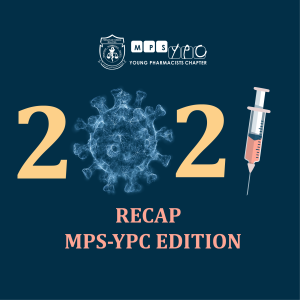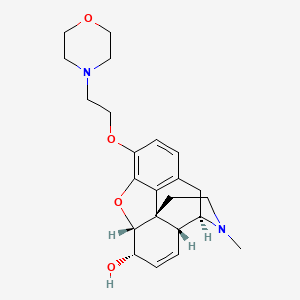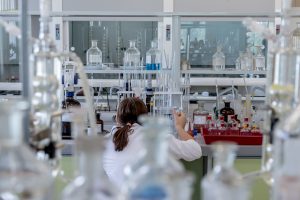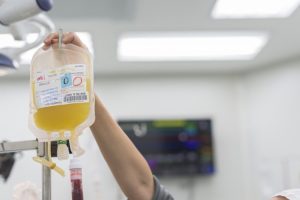PRP FAQ Series: Private Hospital

In this series, ex or current Provisionally Registered Pharmacists (PRPs) will share their experiences in respective industries across the pharmacy landscape in Malaysia. This article will be focusing on the PRP-ship in private hospitals.
For many who want to be a hospital pharmacist, the questions of entering the government or private sector have always been raised. Understandably, prior to the liberalisation of pharmacists where all pharmacists were bound to the government service, there were not many who lived to tell the tale of life as a PRP in a private hospital.
However, in recent years, our nation sees a new brood of hospital pharmacists who have derived their entire experience from the private sector. I’m sure all of us are aware that PRP positions in the private hospitals are very limited. Each institution usually takes in 1-2 PRPs per year and hence it is competitive.
What’s encouraging is we are seeing growing numbers of approved premises and preceptors in the private hospitals in recent years.
If you are considering doing your PRP in the private sector, we hope these frequently asked questions (FAQs) will provide you a helpful overview.
The Basics
1. Which private facilities accept PRPs?
There are several private hospitals throughout Malaysia that offer PRP training. Different facilities will have different intake and vacancies. Do browse through the list of approved premises and check with the respective preceptors for more information.
2. What are the major differences between practicing in a private and government hospital?
A common misconception is that private hospitals are only interested in the dollar sign and are not as invested in helping the patient to reduce their medical costs. This perception typically happens when you compare the prices between settings.
Having said this, government hospitals are heavily funded by the government itself while private hospitals are on their own which means to say private hospitals sustain their operations and profits.
Another misconception is that there is no room to intervene as all physicians are either consultants or a specialist. However, since consultants and specialists’ expertise can be very niche, oftentimes medication errors may still happen in other specialities which are not their domain (it is only human to err).
At the end of the day, our role is never to police physicians but rather, to collaborate and strive for the best for our patient.
The Application

1. How to apply?
Go through the list of approved premises, identify the hospitals that you would like to undergo your PRP training and check the PRP intake and vacancies from the hospital websites or by contacting the preceptor(s). It might be beneficial to expand your network and get some insider news on the availability of PRP positions!
2. What is the application process like?
If the hospitals are recruiting for PRPs, submit your resume/CV/cover letter and pray to be shortlisted for an interview.
Keep in mind that the preceptors would have received piles of CVs and emails on PRP applications, do spend some time crafting a concise resume that makes you stand out from others. Also, it might be good to get someone to proofread your resume!
If you’re shortlisted for an interview, congratulations! But don’t get too excited, the most important thing to do now is to prepare for your interview. Prepare as if this is your only chance.
KEY to success – Be Prepared!
Depending on the institutions, some hospitals may include written tests, oral presentation, and group discussion. Often, successful candidates will be called for a second one-to-one interview.
3. What to prepare for the interview?
Brush up your clinical knowledge and counseling skills. You may need to review prescriptions, provide counseling, give presentations and perform extemporaneous preparation calculation.
Also, you may be given scenarios to judge your decision making. Importantly, show your good interpersonal skills and ability to learn and adapt quickly. The ability to work in a team is an important quality too!

The Work

1. What are some things that I should prepare before my first day at work?
Here is a list of things every PRP should ideally have before the first day, or during the first week:
Must-Haves:
● Appropriate working attire (Whitecoats are usually provided by hospitals)
● Comfortable shoes
● Multicolored pen & Calculator & Scissors (Some may be provided by hospitals)
● Frank Shann book/ Pharmacy-related apps (e.g. Micromedex, MIMS)
● Notebook & Log-book
● Documents that need to be signed and submitted
2. What is the secret sauce to thrive as a PRP in the private sector?
There is no secret, only strategic hard work and an equally generous dose of fun!
● Be efficient and work smart.
● Be diligent and learn quickly.
● Be friendly and learn from everyone.
● Be helpful and collaborative.
● Be humble and seek constructive feedback.
● Be positive and enthusiastic.
● Be agile and adapt to the work culture.
● Speak out and don’t be afraid to ask questions.
● Communicate everything clearly and document all communications.
Moving Forward from PRP
1. What is the process like to go from PRP to FRP in private hospitals?
It depends on the contract stipulated by each facility. Some institutions offer 1 year PRP without a service commitment while others may practise 1 + 1 year or 1 + 2 years contract system. Depending on the mutual agreement, you have to fulfill the service obligation following PRP training, after which you may choose to stay or resign.
During the 1-year PRP training, you will be rotated to various pharmacy services such as outpatient, inpatient, therapeutic drug monitoring, parenteral nutrition, cytotoxic drug reconstitution, ward pharmacy, drug information, manufacturing and pharmacy logistics.
However, not every hospital offers all the services mentioned above. In situations where the hospitals do not provide such services, you might be sent to the Gazetted Hospitals for attachment. For optional modules, you may omit them and the time would be allocated to other services depending on the decision of respective preceptors.
During each rotation, learn as much as possible and fulfill the requirement of all the training modules in the log book within the 52-week time frame. Importantly, you have to achieve marks of at least 60% for all the sections in the log book and an average of at least 60% for the personal assessment to be qualified to register as a FRP. Remember to pass your Qualifying Examination to Practice Pharmacy prior to full registration.
After fulfilling all the requirements, congratulations! You can submit your logbook and become a Fully Registered Pharmacist (FRP).
Some Words from Ex-PRPs
“PRP-ship in private hospitals might be very competitive and challenging at times but rest assured you will definitely benefit from the experience. My experience with SJMC has been a great one. I am very grateful to have good preceptors who are willing to share their knowledge and experience. Not forgetting my ex-colleagues who have helped me generously throughout my journey of PRP-ship. I never regretted doing my PRP training in SJMC. To those who are interested to join private hospitals, besides learning and self-improvement, do spend some time hanging out with your fellow PRPs and colleagues. I know logbooks are important, so does leisure! You only do your PRP once, might as well have fun in the process and make more friends.”
-Kate Kuan, UCSI University, Graduated since June’15
“I was on a hiatus before I signed up for the PRP program in National Heart Institute and have no regrets. To be honest, we deserve that super long break after 4 years of pharmacy school. If anyone ever tells you that you are being left behind, believe me you’re on track and you know that. I’ve learned to not just be a pharmacist, but a good teammate. Here you will learn more on heart management and my favourite was warfarin counselling. I am biased towards inpatient workbench because there I’ve learnt the art of intervening doses and you get better at it. Surely, there are ups and downs and things may not go the way that you want. Your friends are the one keeping you together and yes, they are essential, so make more friends as you venture into the journey.“
-Nor Waheeda Maharon, International Medical University, Graduated since Aug‘16
Some Words from Preceptors
“Completing a Bachelor’s Degree in Pharmacy is a gargantuan feat. However, the challenge does not just end there. Since the liberalisation of the Provisionally Registered Pharmacist (PRP) training took effect in Malaysia, the competition to secure a job has been very tight as employers are looking to hire only the best and the brightest from the pool of pharmacy graduates. Nonetheless, there are a few ways you can improve your chances to get the PRP spot in the private sector. Regardless of your CGPA, the most important qualities employers are looking for in a PRP is the ability to multitask, has good communication skills, and a good attitude. When applying for a job, please ensure that your resume is easy to read (preferably only one page and proof-read), has only the latest information and supplemented with a brief cover letter. If you are called for an interview, the most basic things you need to know are the background of the company, how you managed the most difficult situation in your life, and your flexibility to take on additional roles when required. These are all some simple pointers for all the new pharmacy graduates. With that, I wish you all the best in your future undertakings.”
-Prathaban Sevaraman, Deputy Pharmacy Manager, KPJ Ampang Puteri Specialist Hospital
“I think one will do well in things he/she has interest in. Hence, be sure to choose your training field based on your interest. As a trainee, one must be ready and be proactive in learning, not be choosy about work but taking every opportunity positively as a learning opportunity. Be ready to get your hands dirty. Being organized and responsible, meticulous and detail-oriented, being able to communicate effectively and ready to work in teams, are among the important qualities to have. In terms of writing resume, try to keep it short and simple. Nothing more than 2 pages long.”
-Loo Choon Sitt, Senior Pharmacist, SJMC
This article is contributed by Kate Kuan (former PRP in SJMC), Elizabeth Chong (former PRP in SJMC), Waheeda Maharon (former PRP in IJN), Prathaban Sevaraman (preceptor in KPJ Ampang Puteri Specialist Hospital) and Loo Choon Sitt (preceptor in SJMC).
The tips and tricks above are based on our experiences and these may differ depending on facilities, so it’s best to reach out to PRP seniors or preceptors in your facility.
The opinions expressed in the article are the writers’ own and do not reflect the view of MPS YPC.
Cover photo: upklyak













